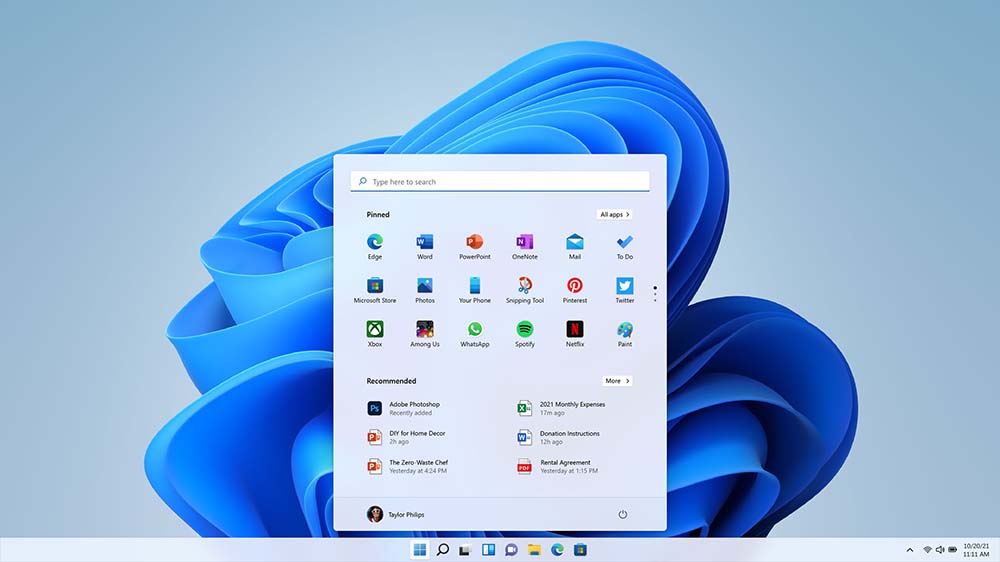With support for Windows 10 not due to stop until 2025 many users will be in 2 minds as to whether the upgrade to Windows 11 is worth it. In this article we explore what has changed and some of the new features and requirements of Microsoft’s latest OS.
Hardware Requirements
As with every new version of Windows (or most operating systems) there is a jump in the hardware required to run it. The full system specifications for Windows 11 can be found on the Microsoft website here.
Unlike its predecessors Windows 11 only offers a 64 bit version. In addition it requires 4GB RAM and a 64GB hard drive, an increase from 1GB and 16GB respectively. Additional features such as Android support require hardware beyond the initial installation specs.
One of the big talking points was the need for all machine’s installing Window’s 11 to have TPM 2.0. Whilst this will mean a lot of older machines (5/6 years+) will not be able to upgrade, the added security provided meant this was a requirement that was coming sooner rather than later.
Start Menu and Taskbar
One of the most noticeable changes in Windows 11 is the redesigned taskbar and start menu. The start menu, search and other icons are now by default placed in the centre of the taskbar instead of to the left, although this can be customised. In the start menu itself the live tile approach of Windows 8 and 10 has been abandoned, replaced with icons for a more clean and minimal look.
The start menu features pinned and recommended apps as well as a search function, which is now at the top. Pinned apps can be chosen by the user for quick access whilst the recommended apps features recently used items, including folders and documents.
It is notable that it is no longer possible to reposition the taskbar to the right or left of the screen, with moving it only possible with third party software.

Support for Android Apps
Windows 11, through the Windows Subsystem for Android is capable of running Android apps natively. This also requires installing the Amazon Appstore in order to download supported apps.
There are a couple of provisos regarding doing so. Firstly the system requirements are higher than those required for Windows 11, with 8GB of RAM, an SSD drive and a supported CPU required. Secondly this has only currently been released in the US with Microsoft looking to support more markets by the end of the year.
Teams Integration
Microsoft Teams (the chat functionality) is now integrated into the taskbar, making accessing it much easier. It looks like Microsoft is trying to move home users away from Skype and onto Teams, with it now built into the OS.

Enhanced Touch and Pen Support
With tablets (including Microsoft’s own Surface range) continuing to expand their share of the market Windows 11 offers enhanced support for touchscreen devices.
Whilst it is arguable that the tablet experience has never been Window’s strong suit, there has been an effort to improve things in Windows 11. Whilst it is very much a hybrid experience the gestures are now far more in line with what you would expect in other operating systems. The start menu can be accessed and dismissed using a swipe whilst the quick settings and notifications also accessible using single gestures.
Whilst Windows 10 had a named Tablet Mode that could be switched on and off, in Windows 11 this toggle is automatic and is triggered when a detachable keyboard is connected or removed. The small changes to the UI in this mode are quite subtle such as icons being placed further apart, however the Windows 11 interface in general has been decluttered making for a more usable experience.

